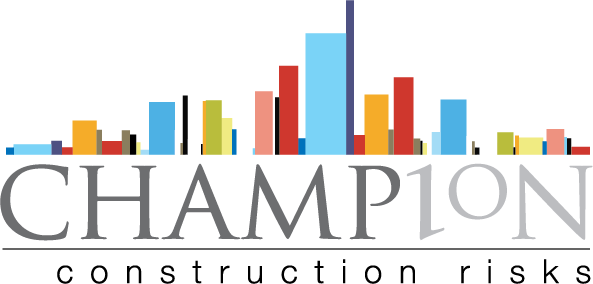- Products
- Public Liability InsuranceProducts Liability InsuranceProperty Owners Liability InsuranceEmployers' Liability InsuranceContractors All Risks InsuranceContractors CombinedOwn Plant and Hired In Plant InsuranceProfessional Indemnity InsuranceOffice InsuranceDirectors & Officers InsuranceGroup Personal Accident InsuranceJCT Clause 6.5.1 InsuranceMotor Fleet Insurance“Special Types” Motor InsuranceSingle Project InsuranceLatent Defects and Structural WarrantiesTrades We Like
- ArchitectsCivil EngineersDemolition ContractorsElectrical ContractorsGroundworkersHome BuildersPainting & DecoratorsPiling ContractorsPlant HirersPlumbing & Heating ContractorsTraffic ManagementPlastering ContractorsRoofing ContractorsScaffolding ContractorsShopfitting ContractorsStone MasonsHeating, Ventilation and Air Conditioning (HVAC) InsuranceAsbestos Removal InsuranceClaimsAbout
- Products
- Public Liability InsuranceProducts Liability InsuranceProperty Owners Liability InsuranceEmployers' Liability InsuranceContractors All Risks InsuranceContractors CombinedOwn Plant and Hired In Plant InsuranceProfessional Indemnity InsuranceOffice InsuranceDirectors & Officers InsuranceGroup Personal Accident InsuranceJCT Clause 6.5.1 InsuranceMotor Fleet Insurance“Special Types” Motor InsuranceSingle Project InsuranceLatent Defects and Structural WarrantiesTrades We Like
- ArchitectsCivil EngineersDemolition ContractorsElectrical ContractorsGroundworkersHome BuildersPainting & DecoratorsPiling ContractorsPlant HirersPlumbing & Heating ContractorsTraffic ManagementPlastering ContractorsRoofing ContractorsScaffolding ContractorsShopfitting ContractorsStone MasonsHeating, Ventilation and Air Conditioning (HVAC) InsuranceAsbestos Removal InsuranceClaimsAbout
-
The Perfect Storm - Construction Professional Indemnity Market Update
‘Soft’ conditions generally mean the availability of low premiums and wide coverage as insurers compete for customers. However due to a variety of different factors, unfortunately, we are now experiencing a significant contraction of this market and in particular the construction Professional Indemnity market.
Professional Indemnity insurance, in general, is one of the underperforming lines across the industry in terms of profitability, and Lloyds of London has been targeting loss-making syndicates which has restricted how much PI business can be written through Lloyds. Other insurers have ceased writing Professional Indemnity business altogether and there is a drive in the industry to make these lines of business more profitable in the long term.
The issues highlighted above are magnified in the construction Professional Indemnity market. The construction sector has experienced an increase in Professional Indemnity claims activity in recent years as projects become more expensive and complex. Company failures in the construction industry (highlighted by the Carillion collapse) create more risk for insurers as insolvencies provide fertile ground for Professional Indemnity claims. The contracting environment has become increasingly tough with employers attempting to transfer risk down the supply chain by dictating that those below them take on more liability, and insurers have heightened concerns around cladding and fire safety post-Grenfell. These factors combined have created “The Perfect Storm” in the construction Professional Indemnity market.
These harsh conditions mean that the insurers who are still participating in construction Professional Indemnity are being far more selective in underwriting risks than before. They are asking for more detailed information from existing and prospective policyholders to assess the risks more accurately, and specific questionnaires (in addition to the annual proposal form) such as “Cladding questionnaires” are becoming the norm. We are experiencing insurers de-risking by pulling back their limits of liability and applying more restrictive clauses and exclusions (e.g. cladding and fire safety exclusions or basement and swimming pool exclusions) and premiums and policy excesses are on the rise.
As a buyer of construction Professional Indemnity insurance, there are measures that you can take to mitigate the impact of these changing market conditions on your own Professional Indemnity insurance. You should engage with your broker early and be diligent in providing thorough and digestible information on your company and its activities and processes. You need to be able to demonstrate to insurers that you have robust risk management processes in place which reduce insurers’ risk (this includes “contractual” risk management measures implemented to reduce or cap your liability within your contracts). If your organisation is profitable it is worth demonstrating this to potential insurers as it will give them some comfort that you are not under pressure to take short cuts which might increase the Professional Indemnity risk. Meeting with your insurers is also recommended as this will help build trust and could potentially result in obtaining better terms.
As the insurance market is cyclical the industry is hopeful of a return to more favourable trading conditions but for the short to medium term, purchasers of Professional Indemnity insurance, particularly in the construction sector, need to brace themselves for some uncertain times ahead.
As specialist Chartered Insurance Brokers to the construction industry, Construction Risks UK has been placing Professional Indemnity for companies in the construction sector for many years and have the expertise and experience needed to secure the most favourable Professional Indemnity terms available in the market. Please talk to us today on info@constructionrisks.uk or call us on 0330 053 9494.
